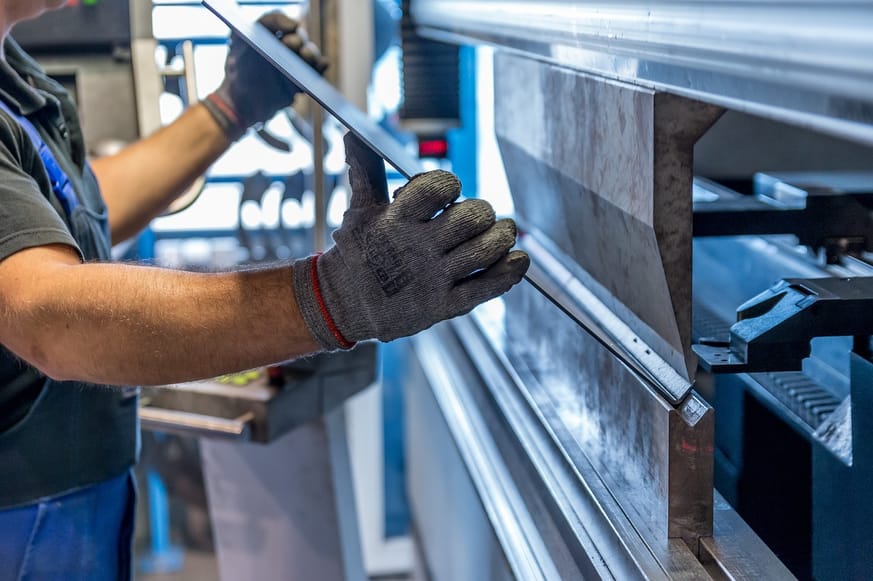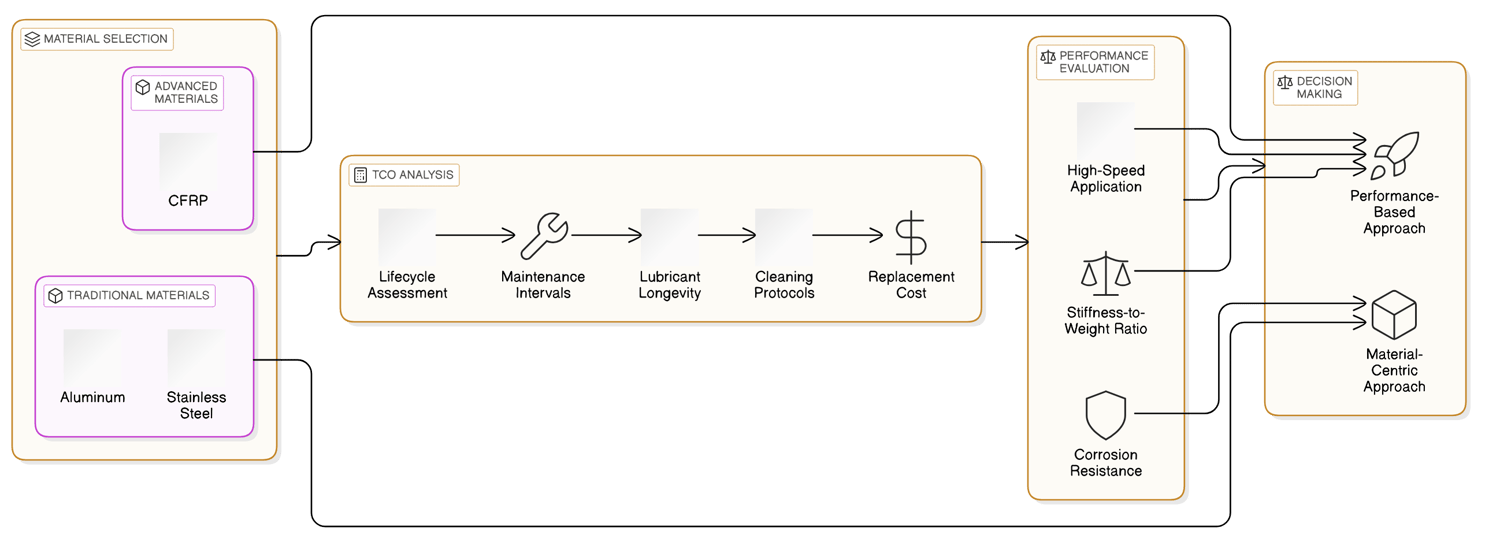Summary
This essential guide delves into the latest advancements in stainless steel linear rails, highlighting their significance for various industries seeking enhanced performance and longevity. Key Points:
- Explore advanced surface treatments like DLC coatings and electropolishing that enhance corrosion resistance and lubricity for demanding applications.
- Integrate novel materials and hybrid designs to improve load capacity, stiffness, and corrosion resistance compared to traditional stainless steel rails.
- Utilize IoT technology for predictive maintenance in stainless steel linear rails, optimizing performance through real-time monitoring of wear and other parameters.
Choosing the Right Stainless Steel Linear Rails: What Are Your Project Needs?
My First Stainless Steel Linear Rail Project: A Tale of Trial and Error
By day two, the thrill faded fast. Every tweak seemed to create new hurdles. “This shouldn’t be this complicated!” I groaned, staring at what felt like a jigsaw puzzle missing half its pieces. Each failed adjustment left me more bewildered—was this really supposed to be user-friendly? My buddy Dave popped by and chuckled nervously, “You sure you followed the manual?”
Seriously? The manual was thick enough to stop a bullet! At that moment, all we could do was share an exasperated laugh—I mean… who knew something so shiny could bring so much grief?
| Type | Material | Corrosion Resistance | Application Areas | Key Features |
|---|---|---|---|---|
| Stainless Steel Linear Guide Rails (SL2) | Stainless Steel | High | Food and Medical Industries, Corrosive Environments | Designed for maximum corrosion resistance; suitable for harsh conditions. |
| Cam Roller Linear Guide Rails (GN 2492) | Stainless Steel | Moderate to High | Industrial Applications, Robotics, Automation Systems | Can be paired with corresponding carriages; provides smooth movement. |
| Linear Guide Assemblies with Recirculating Elements | Steel/Aluminum/Stainless Steel Options Available | Varies by Material Choice | General Industrial Use, Machine Tools, Automated Equipment | Utilizes recirculating rolling elements for enhanced precision and longevity. |
| Custom Stainless Steel Motion Systems from Euro-Bearings Ltd. | Stainless Steel/Ceramic Hybrid Options Available | High to Extreme depending on configuration | Specialized Applications in Food Processing, Pharmaceuticals, Marine Environments | Tailored solutions ensuring optimal performance in demanding environments. |
The Turning Point: Overcoming Challenges with Stainless Steel Linear Rails
"Maybe we should call tech support?" Dave finally suggested, glancing up from his scattered papers. But even that idea hung heavy in the air; we knew how long those calls could take.
I glanced around and noticed Sarah standing by the door, arms crossed and tapping her foot impatiently. "I thought this was supposed to be fun," she muttered under her breath, though I caught just enough of her frustration to know she wasn’t alone.
We all felt it—the mix of determination and doubt swirling among us made it almost palpable. It hit me then: this problem wasn't just mine anymore; it was affecting everyone’s mood—and our progress came to a standstill. The once lively chatter faded into an awkward silence as we eyed each other, unsure of what to do next…
How We Help You Select the Perfect Stainless Steel Linear Rail System
“We tried a few configurations,” Dave recalled later, his brow furrowing in concentration. “But nothing seemed right.” Sarah chimed in skeptically, “I’m not sure if switching materials is going to solve our issues.”
The atmosphere was thick with mixed emotions; some felt cautiously optimistic while others expressed doubt. As we examined options and debated potential solutions, one thing was clear: despite our efforts, clarity remained elusive. The room buzzed with uncertainty—was there truly a way forward?

 Free Images
Free ImagesFrequently Asked Questions about Stainless Steel Linear Rails
Another frequently asked question revolves around load capacity: "How much weight can these rails handle?" This is crucial! The cross-sectional design and material properties dictate how much weight your rail can support. If you overlook this detail, you might end up with rails that are not suited for your application’s demands—leading to potential failures down the line.
People also ask about the smoothness of the rail surface and bearing types: "Should I go for ball bearings or plain bearings?" Generally speaking, ball bearings offer better precision and lower friction, which is something many users appreciate for their projects. 💡 A smoother operation means less wear and tear over time!
Lastly, environmental factors often come into play: "Will temperature changes affect my rail's performance?" Absolutely! Temperature fluctuations and exposure to chemicals can compromise material integrity. It’s essential to tailor your selection based on specific project needs so that you ensure longevity and reliability throughout its use.
In summary, remember these key aspects when selecting your stainless steel linear rails; they’re critical in achieving optimal performance for your projects!
Beyond the Basics: Exploring Different Stainless Steel Grades for Linear Rails
Stainless Steel vs. Other Materials: Weighing the Pros and Cons for Linear Rail Applications
A Practical Guide: Specifying and Installing Stainless Steel Linear Rails
When it comes to enhancing the precision and durability of your projects, choosing the right stainless steel linear rails is absolutely crucial. These components can significantly affect not only the performance but also the longevity of your setups. I often recommend following a structured approach to ensure you make informed decisions that suit your specific needs.
Many people overlook certain details when selecting linear rails, which can lead to costly mistakes down the road. For instance, I once encountered a project where improper rail selection led to frequent misalignment issues. This experience highlighted how vital it is to consider factors like load capacity and environmental conditions right from the start.
Here’s a step-by-step guide on specifying and installing stainless steel linear rails effectively:
1. **Determine Your Application Requirements**
Start by assessing what you'll be using the rails for. Consider factors such as load capacity, movement speed, and accuracy needed for your application. (Remember: clarity in this step sets a solid foundation for all subsequent choices.)
2. **Choose the Right Stainless Steel Grade**
Select between 304 or 316 grades based on corrosion resistance needed for your environment—316 is best for harsher conditions due to its higher nickel content.
3. **Define Dimension Specifications**
Measure available space accurately before selecting rail dimensions. Ensure they fit comfortably within your setup without sacrificing performance.
4. **Select Rail Profile**
The profile impacts strength; flat-bottomed profiles are typically more stable under heavy loads while round profiles may offer better flexibility in movement.
5. **Installation Preparation**
Gather necessary tools including a level, torque wrench, drill bits compatible with metal, and alignment jigs if required (I personally find having everything prepared reduces stress during installation).
6. **Aligning Rails Properly**
Now comes one of the most critical steps! Use shims or leveling devices to ensure that each rail is perfectly aligned before securing them in place—this will minimize wear over time (I always double-check my alignments because it's easy to overlook).
7. **Securing the Rails**
Fasten using appropriate screws or bolts specified by manufacturer guidelines; do not overtighten as this could warp the rail (a gentle reminder: follow torque specifications closely!).
8. **Test Movement Before Finalizing Installation**
Slide any attached carriages back and forth along the rails after installation but before everything is locked down completely; look out for smooth operation—this step saves you troubleshooting later!
9. **Regular Maintenance Checks**
Finally, schedule periodic inspections for wear or misalignment caused by contaminants or temperature changes—staying proactive here prolongs life expectancy significantly!
For those looking to take their application further: if you're interested in optimizing motion control systems further with advanced sensors or automated monitoring solutions, don’t hesitate! Implementing technology can enhance both efficiency and functionality dramatically.
By committing these steps into practice while being mindful of details throughout each phase, you’ll ensure that your choice of stainless steel linear rails works seamlessly within your projects—saving you time, effort, and ultimately contributing towards achieving greater success!

The Future of Stainless Steel Linear Rail Technology: What`s Next?
Conclusion: Making Informed Decisions with Stainless Steel Linear Rails
As industries evolve and demands for precision increase, staying informed about advancements in materials and technologies becomes crucial. For instance, while 304 stainless steel may suffice for indoor environments, exploring options like 316 could be vital for applications exposed to harsher conditions. The rail profile you choose can also influence installation ease and system rigidity—elements that are often overlooked but essential for long-term success.
Now is the time to dive deeper into the specifics of your upcoming projects. Analyze your unique needs against these parameters to ensure optimal linear motion system performance. Remember, adapting to trends in material science not only prepares you for current challenges but also equips you for future innovations in design and engineering practices. Let’s proactively embrace these insights as we move forward together!
Reference Source
Linear Guides | Stainless Steel Linear Rails - RS Components
Linear guide assemblies are mechanisms that provide linear motion by recirculating rolling elements between a rail ...
(1490-37-634-A5-2-NI) Stainless Steel-Linear guide rail systems interior ...
This page is Stainless Steel-Linear guide rail systems interior travel path, part number 1490-37-634-A5-2-NI.
Stainless steel linear guide
Find your stainless steel linear guide easily amongst the 96 products from the leading brands (Thomson, SKF Linear & Actuation ...
SL2 Stainless Steel Linear Guide | Corrosion Resistant
SL2 is a corrosion resistant, stainless steel linear guide system for use in food and medical industries, or corrosive environments.
GN 2492 Stainless Steel Cam Roller Linear Guide Rails
Stainless steel cam roller linear guide rails GN 2492 can be combined with stainless steel cam roller carriages GN 2494 or ...
Stainless Steel Linear Bearings and Linear Motion Systems
Euro-Bearings Ltd offer a wide range of Stainless Steel Linear bearings and Stainless Steel Linear Motion Systems.
Linear Rails from Automotion
A linear guide, or linear rail, is a system which helps with the movement and supporting of the load of a piece of equipment in a linear fashion.
Linear Rail and Guides
Material Specifications: Linear guides and rail systems are often manufactured from high-grade materials such ...


 ALL
ALL Smart Ecosystem
Smart Ecosystem
Related Discussions